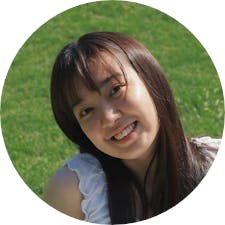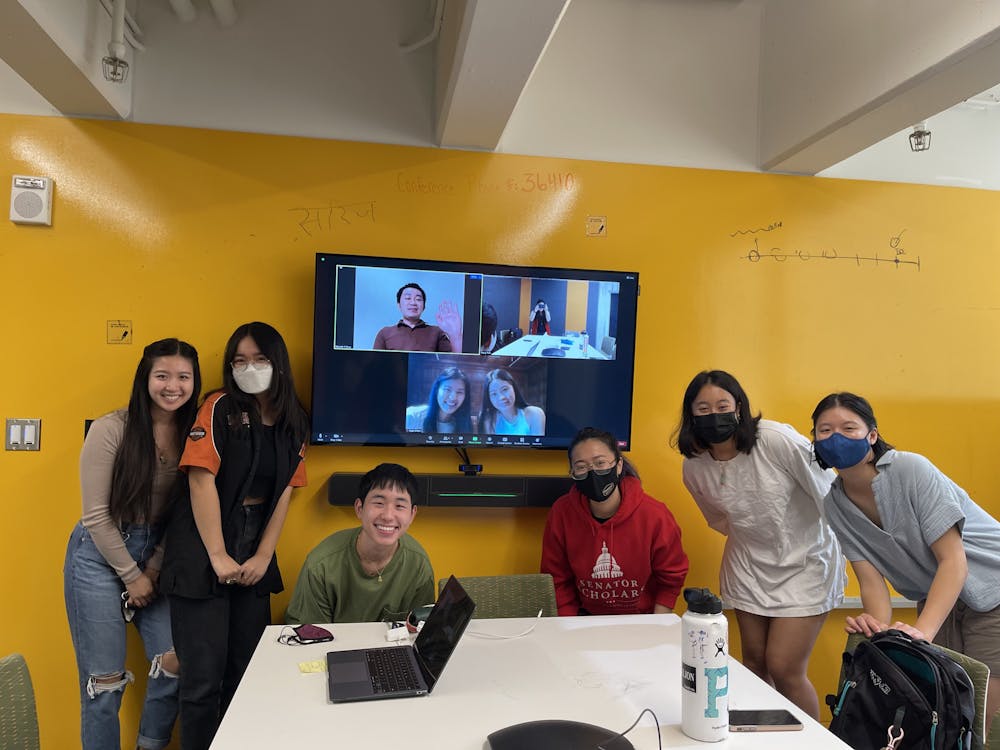Visiting Lecturer in Vietnamese Trang Tran joined the University this fall to offer Brown’s first beginning and intermediate level Vietnamese language classes. There are nine students enrolled in the beginning level and seven in the intermediate, including two students from Princeton.
The Southeast Asian Studies Initiative, which discussed this idea with the University in April 2019, proved crucial in the creation of these courses.
“They were very instrumental in reaching out to me, ... the (Office of the Dean of the Faculty) and ... the East Asian Studies department with their wish to have Brown offer courses in Vietnamese,” said Jane Sokolosky, director of the Center for Language Studies.
Students in SEASI presented a letter to CLS signed by students and faculty, in which they not only advocated for Vietnamese courses but also included a course list where “the knowledge of Vietnamese language and culture would be important for a deeper understanding of the course content,” according to Sokolosky. It also mapped out internship opportunities that required the skills of Vietnamese language and culture.
The letter reflected “a real desire across campus and a real need” for Vietnamese courses at the University, and Sokolosky received approval to search for faculty during the fall 2019 semester. But factors including COVID-19 halted the process, and it wasn’t until spring 2021 that Sokolosky was able to hire someone for the job.
“Students who come to my class really want to come to my class,” Tran said. They are “really motivated.”
SEASI also collaborated with the Brown-RISD Vietnamese Students Association in order to propose the language courses.
Nearly all students enrolled in both sections are Vietnamese heritage speakers, who either speak Vietnamese at home or have Vietnamese-speaking parents and/or grandparents. Brown students do not take the course to fulfill a language requirement and have overwhelmed Tran “with how committed … (and) hard-working they are,” Tran said. Although she was worried about overburdening her students by posting too many videos on Vietnamese culture and pronunciation, she said, “they watch all of them.”
Kaitlan Bui ’22, a student in the intermediate section, said that she shopped the class without planning to take it but ended up staying because “it was just a community that (she hasn’t) come across before (at) Brown.”
Offering Vietnamese “reflects a kind of acknowledgment (of) Southeast Asian history and (its) place in academia,” Bui said.
“There has always been a component of shame that is historically rooted in war, in trauma and all these other things,” Bui said. Growing up in the United States, “I really grappled with my identity as Vietnamese-American.”
Even though she loves learning languages, she kept delaying learningVietnamese, considering it to be accessible at home. But Bui realized “that if I don’t learn (Vietnamese) now, when will I do it?” For her, wanting to take the language course was “a metaphor for wanting to be proud of (her) heritage,” she said.
“It was kind of crazy to hear my Vietnamese name, spoken aloud in the classroom and in the dialect that was spoken at home,” Bui said. “I think it just felt very warm to me.”
But teaching the course comes with challenges. Tran taught English in Vietnam before receiving a Fulbright Scholarship to come to the United States and eventually becoming a lecturer for Vietnamese in the country. She said she finds a “huge” difference between instructing English in Vietnamese and Vietnamese in English: “There are so many resources and materials for teaching English, but it’s so hard to find the right textbook for Vietnamese.”
In addition to teaching the beginners fundamental grammar and vocabulary and the intermediate students more reading and writing, Tran wants to “help them communicate well in real-life situations.”
Tran planned to invite guest speakers to both course levels so that students could “communicate with other native speakers” besides her. She intends to invite someone with Vietnamese teaching experience who would be “sympathetic and patient” when working with beginner-level students. For the intermediate section, Tran tries to match speakers with topics covered in class. On their Vietnamese services and tourism topic, for instance, Tran sought out a professional tour guide in Vietnam who has organized domestic and international tours.
“I want to prepare them for traveling to Vietnam because some of them might go for internships or the Fulbright scholarship,” Tran said.
Sokolosky said that while “less commonly taught languages” such as Vietnamese may initially see few students, “they are very important.”
Also typical among less commonly taught languages is the sharing of courses between universities, Sokolosky said. For example, the CLS has done course sharing on the African language Yoruba with Cornell, even before people became familiar with Zoom during the COVID-19 pandemic, she added.
“The idea was, if we are trying to expand the language offerings around campus, we are going to have to start with … these programs where we share across universities,” Sokolosky said. Princeton’s Center for Language Study reached out to Sokolosky about the possibility of sharing the Vietnamese courses.
“We are happy to be doing (the course) with Princeton,” she said, adding that the available technology has facilitated this partnership.
“I get to speak Vietnamese every day, and that never happened before,” said Ngan Chiem, a student in the class of 2023 at Princeton, who is in the intermediate section.
Chiem had wanted to take Vietnamese “since the first day of Princeton,” but, after talking to the director of study and her academic advisor, she realized that she would have to “outsource it.” This summer, she heard from Princeton about the opportunity to take the course shared with Brown.
While at Princeton, Chiem is able to better connect with Brown students through in-class exercises. She also works on group projects with Brown students, during which they sometimes talk in both English and Vietnamese. “You can never do that with anyone else. It’s like a special connection,” Chiem said.
But Bui said that Vietnamese language courses at Brown appear understaffed compared to other language courses she has enrolled in. For example, a University Chinese course she took had three professors, but there is only one professor for the two sections of Vietnamese, and students’ varying level of fluency in Vietnamese cannot be sufficiently accounted for given that there are only two levels.
“There’s almost a strange sense of ‘we want to protect this branch of Vietnamese language learning at Brown’” as a student, she said. “The burden shouldn’t be on the students to prove that something matters, that diversity and inclusion matter.”
Beverly Bossler, chair of the East Asian Studies Department, wrote in an email to The Herald that the fluency variation among students Bui described “is common in many language classes, especially in a new program and especially beyond the beginning level” because “students often come in with varying degrees of experience.” But the department does “expect that students who are at a beginning level this year and continue next year will be at a more uniform level.”
“Adding additional classes would require additional funding, and that is a decision made in the Dean’s office and not under my department’s control,” Bossler wrote.
The plan is to continue offering Vietnamese in the future and make sure students have “continuity of instruction,” Sokolosky said. She feels “comfortable with the offering” at Brown and thinks the University does not “necessarily need to be focusing on offering more languages” but should try to “make languages at Brown a more important part of the equation.”
Sokolosky added that students can always reach out to the CLS if they wish to study a language not offered at Brown.
Clarification: A previous version of this article noted that the Southeast Asian Studies Initiative drove the efforts to create Vietnamese language courses. The Brown-RISD Vietnamese Students Association was also involved.
Correction: A previous version of this article called the Southeast Asian Studies Initiative the "Southeast Asian Students Initiative." The Herald regrets the error.

Kathy Wang was the senior editor of community of The Brown Daily Herald's 134th Editorial Board. She previously covered student government and international student life as a University News editor. When she's not at The Herald, you can find her watching cooking videos or writing creative nonfiction.





